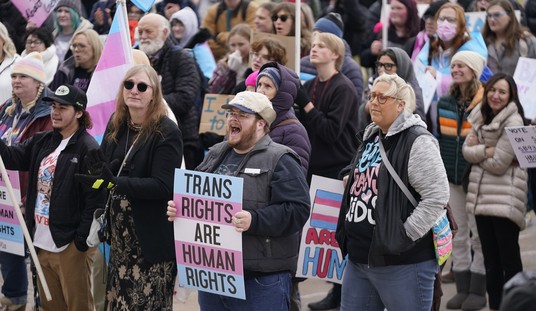Alternate title: "A Tale Of Two Neighboring Cities With Immigration Policies So Different As To Almost Appear To Be A Scientific Experiment".
When most Americans think of Scandinavia, they likely think of places with Alaska-style natural beauty, inhabited by statuesque blondes as passive-aggressive as a Garrison Keillor sketch, ruled by a government that combines German-style bureaucracy with a demeanor inspired by (or perhaps which inspired) IKEA.
As an American of Scandinavian (Norwegian and Swedish) descent, I think about the same thing. Scandinavia is beautiful, efficient, way too in love with "social democracy," but otherwise traditionally boring in all the right ways.
But have you read the headlines from Sweden lately?
Swedish city Malmö is now ranked as dangerous as Baghdad.
— PeterSweden (@PeterSweden7) October 15, 2025
There has been 161 b*mbings in Sweden so far in 2025.
We have almost 60 no-go zones.
Bombings in Sweden? I haven't heard about bombings in Sweden since the band "Europe" tried to break through in the US in 1985.
But no. It's a thing:
A bomb has exploded in central Stockholm.
— Nicholas Lissack (@NicholasLissack) December 22, 2024
Heartbreakingly, this has become the new normal for Sweden—a nation rocked by 149 bombings last year alone, with 351 incidents when failed attempts are included.
This is Europe in 2024, and it should never have come to this. pic.twitter.com/LzunTpRtiT
And it's not just bombings - crime in general has exploded in Sweden:
Dessa två herrar lurade till sig guldsmycken värda 330 000 kr den 22 oktober i Malmö, varefter de skrattande lämnade butiken. Men; skrattar bäst som skrattar sist. Nu jagas de av Polisen.
— Malmgren! 🇺🇦 (@malmskinen) November 2, 2025
Vet du vilka männen är? Tipsa Efterlyst på 08-702 00 90 eller Polisen på 114 14. pic.twitter.com/fNaB95EgEM
("These two gentlemen tricked their way into gold jewelry worth 330,000 kr on October 22 in Malmö, after which they laughed and left the store. But he who laughs last laughs best. Now they are being pursued by the Police.")
You may have noticed something in common: Malmö. It's a city in Sweden, directly connected across the five-mile-long Øresund Bridge across the Øresund Straits from Copenhagen, Denmark - two places that might seem indistinguishable to Americans, but which had diametrically different immigration policies over the past decade.
In 2015, when asylum-seeking from the Middle East and Central Asia turned into a flood tide, Sweden all but threw open its doors. Denmark, on the other hand, clamped down hard:
With some of the strongest immigration laws in Europe, Denmark showed an unambiguous determination to keep migrants out. It cut benefits to asylum-seekers and passed a law that allowed authorities to seize valuables worth more than €1,340 ($1,565) from refugees to pay their food and housing costs. A court even fined a woman and her husband €6,000 for “human smuggling” when they drove a refugee family across the country.
The Swedes went in the opposite direction - taking in 160,000 migrants in a nation with a population a little smaller than Ohio. And while the migration has touched most Swedish cities, its centered on Malmö - a city which has been to Middle Eastern in-migration to Sweden what El Paso during the Biden years was to the US.
And...it's caused problems:
Mass rioting in Malmo, Sweden after a rumor gets out that someone burned a Koran. pic.twitter.com/CETqTDG5iI
— Ian Miles Cheong (@stillgray) August 28, 2020
As in much of Europe, it's driven the rise of "far right" anti-immigrant politics and parties in Sweden.
Denmark has been watching what's happened across the Øresund, and has taken an intensely pragmatic approach:
Denmark’s answer has been to be extremely selective about the migrants it takes.
In 2024, it granted asylum to 864 people – a historic low for a nonpandemic year. In recent years, Denmark has also accepted 200 refugees annually from the United Nations refugee agency, UNHCR. (As of 2023, similar-size Norway was accepting 2,000.) A new policy allows for work migrants from only 16 countries whose nationals are believed to be easier to integrate, based on likely economic contributions. (None of the countries are in the Middle East or Africa.)
The Danes - led, perhaps counterintuitively by the Social Democrats, the promoters of open borders everywhere else in the West - have had a conversation that has been pretty well shouted off the stage in Sweden - and the US, as well:
Partly to inform the nation’s migration policy, the Finance Ministry calculates how much different groups either contribute to, or draw from, the national budget.
According to its 2019 report, people of Danish heritage contributed €15 billion ($17.6 billion) to state coffers, while migrants and first-generation descendants from the Middle East and North Africa cost Denmark €3.2 billion....
They did the math:
Denmark’s welfare system is the country’s “crown jewel,” says Rune Stubager, a political scientist at Aarhus University. In a recent magazine article, two government ministers declared, “It is the Nordic social democracies that have created the best societies in world history.”
That idea has huge support among Danish voters, creating a kind of “‘Danish Welfare State First’ policy,” says Professor Stubager.
One wonders if anyone, let alone a Democrat, could get away with doing that kind of math in the United States.








